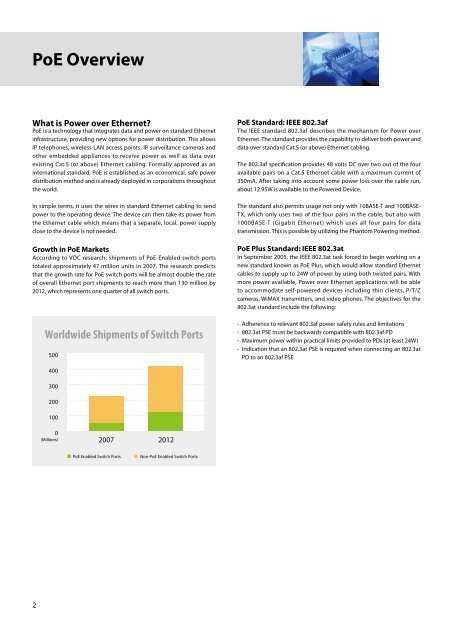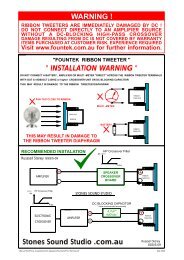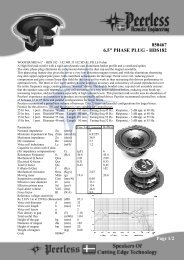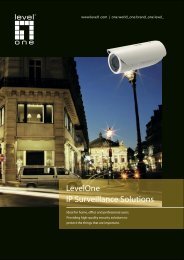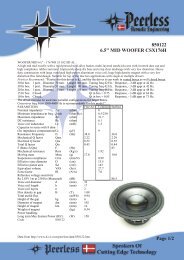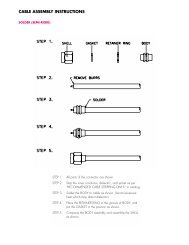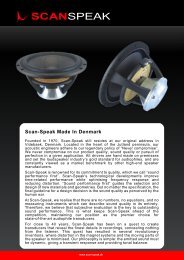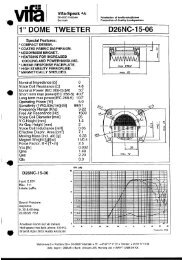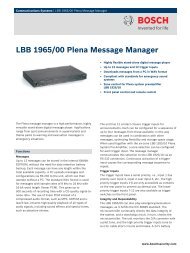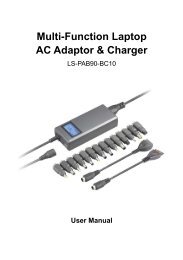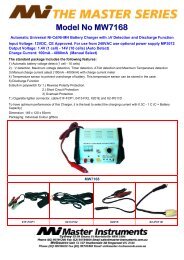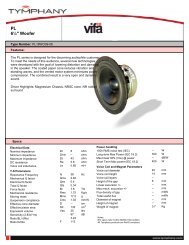Download PDF - WES Components
Download PDF - WES Components
Download PDF - WES Components
- No tags were found...
You also want an ePaper? Increase the reach of your titles
YUMPU automatically turns print PDFs into web optimized ePapers that Google loves.
PoE OverviewWhat is Power over Ethernet?PoE is a technology that integrates data and power on standard Ethernetinfrastructure, providing new options for power distribution. This allowsIP telephones, wireless LAN access points, IP surveillance cameras andother embedded appliances to receive power as well as data overexisting Cat.5 (or above) Ethernet cabling. Formally approved as aninternational standard, PoE is established as an economical, safe powerdistribution method and is already deployed in corporations throughoutthe world.In simple terms, it uses the wires in standard Ethernet cabling to sendpower to the operating device. The device can then take its power fromthe Ethernet cable which means that a separate, local, power supplyclose to the device is not needed.Growth in PoE MarketsAccording to VDC research, shipments of PoE-Enabled switch portstotaled approximately 47 million units in 2007. The research predictsthat the growth rate for PoE switch ports will be almost double the rateof overall Ethernet port shipments to reach more than 130 million by2012, which represents one quarter of all switch ports.Worldwide Shipments of Switch Ports500PoE Standard: IEEE 802.3afThe IEEE standard 802.3af describes the mechanism for Power overEthernet. The standard provides the capability to deliver both power anddata over standard Cat.5 (or above) Ethernet cabling.The 802.3af specification provides 48 volts DC over two out of the fouravailable pairs on a Cat.5 Ethernet cable with a maximum current of350mA. After taking into account some power loss over the cable run,about 12.95W is available to the Powered Device.The standard also permits usage not only with 10BASE-T and 100BASE-TX, which only uses two of the four pairs in the cable, but also with1000BASE-T (Gigabit Ethernet) which uses all four pairs for datatransmission. This is possible by utilizing the Phantom Powering method.PoE Plus Standard: IEEE 802.3atIn September 2005, the IEEE 802.3at task forced to begin working on anew standard known as PoE Plus, which would allow standard Ethernetcables to supply up to 24W of power by using both twisted pairs. Withmore power available, Power over Ethernet applications will be ableto accommodate self-powered devices including thin clients, P/T/Zcameras, WiMAX transmitters, and video phones. The objectives for the802.3at standard include the following:- Adherence to relevant 802.3af power safety rules and limitations- 802.3at PSE must be backwards compatible with 802.3af PD- Maximum power within practical limits provided to PDs (at least 24W)- Indication that an 802.3at PSE is required when connecting an 802.3atPD to an 802.3af PSE4003002001000(Millions)2007 2012PoE Enabled Switch PortsNon-PoE Enabled Switch Ports2


